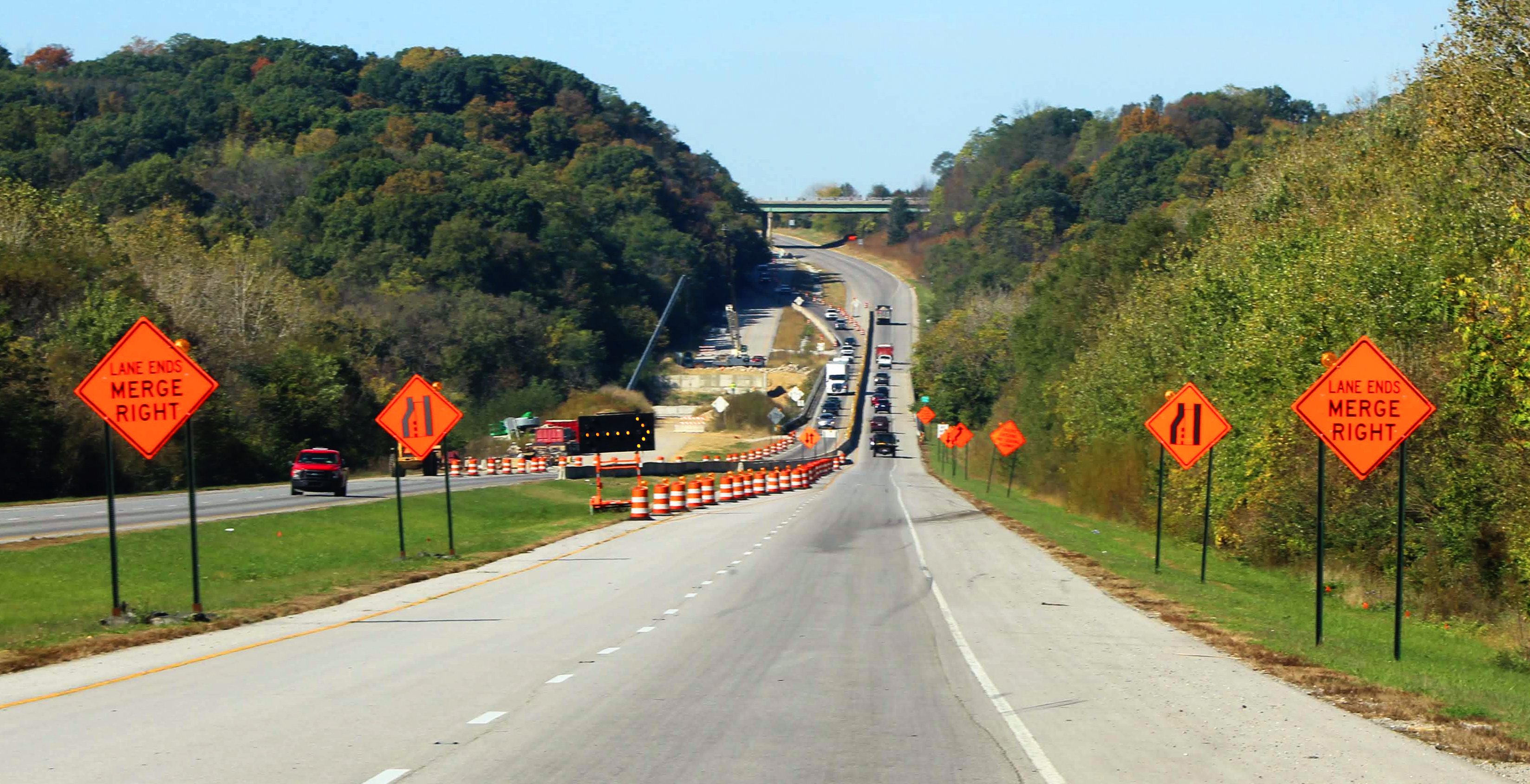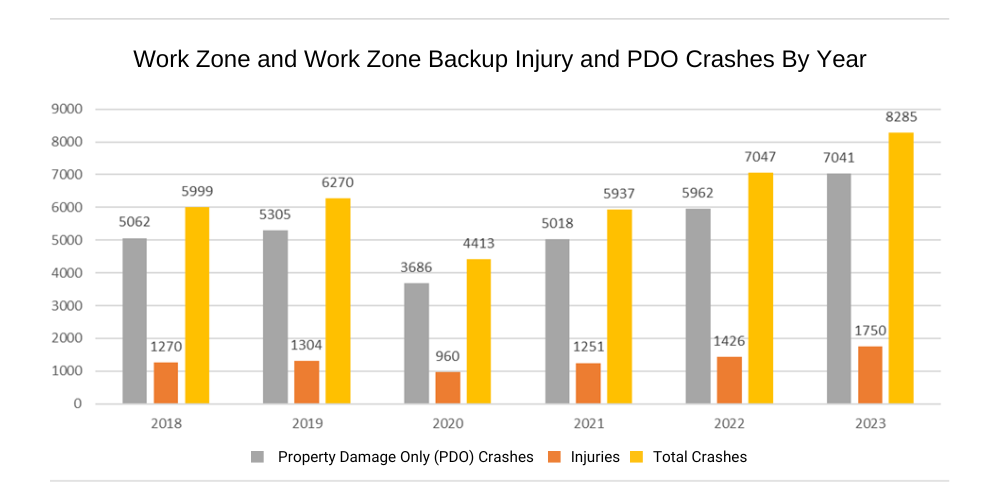This page provides an overview of work zone safety laws, relevant statistics, and essential driving tips.
Overview

INDOT works diligently to reduce the effect of construction activities, particularly on interstate highways, where statistics show there is greater risk of injury or death in a work zone crash. Over the past decade, 269 people have been killed in work zones or work zone backups, including motorists and workers. With the help of the traveling public, we are determined to reduce these numbers to protect both workers and Indiana roadway users.
INDOT also works hard to provide timely, accurate, and relevant work zone information to travelers using message boards, the INDOT TrafficWise website and Mobile App for real-time traffic conditions, and social and traditional media. To reduce driver confusion, we focus on building and maintaining work zones where travel paths are clear and where driver expectations are known. To protect our workers, we require high visibility safety apparel and protective equipment on all INDOT projects.
We are dedicated to protecting all workers that build and maintain INDOT roadways. However, it’s important to realize that 4 out of 5 people that die in highway work zones are either drivers or passengers. Accordingly, INDOT’s Work Zone Safety group is also dedicated to protecting motorists who drive through our work zones.
Work Zone Safety is everyone’s responsibility. Please use caution and drive carefully when traveling through highway work zones.
In 2023, work zone crash data showed that 33 people were killed and more than 1,750 were injured in INDOT work zones.

Indiana's Work Zone Safety Law
The Indiana Work Zone Safety Law sets steep penalties for driving infractions within highway work zones. First time citations for speeding in a work zone result in a $300 fine. The fine increases to $500 for a second offense and $1,000 for a third offense within three years. Motorists who drive recklessly or aggressively through a work zone face fines up to $5,000. Drivers who injure or kill a highway worker may end up paying a $10,000 fine and serving up to six years behind bars. Fines generated from the work zone law are used to fund additional work zone patrols in an around work zones. The following links are provided for your reference concerning laws affecting work zones in Indiana:
